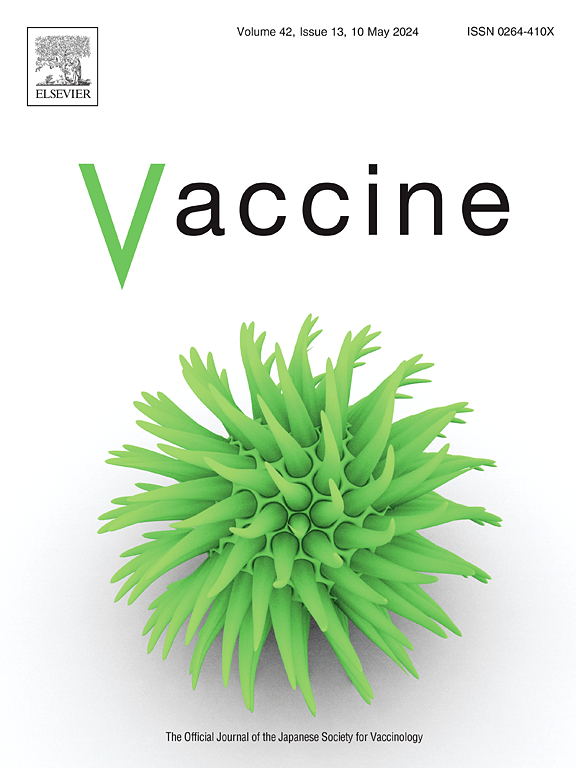提高HPV疫苗接种覆盖率的学校疫苗接种规划——来自德国不来梅的经验。
IF 4.5
3区 医学
Q2 IMMUNOLOGY
引用次数: 0
摘要
德国主要依靠基于实践的机会性免疫系统。尽管2007年将人乳头瘤病毒(HPV)疫苗纳入德国疫苗接种计划,但覆盖率仍然很低。国际经验表明,以学校为基础的疫苗接种可以提高HPV的覆盖率。因此,在2013/14年度,不来梅公共卫生部门在一个学校项目中为所有8年级学生提供了HPV疫苗接种。我们的目标是评估该项目,重点关注弱势群体。在回顾性队列设计中,我们分析了2015/16至2018/19年(女孩)和2022/23年(女孩和男孩)所有8年级学生的疫苗接种状况和接种率。分项分析以学校社会指数(SSI)为基础,考虑到贫困、移民、生活环境等因素,从1(较高的社会经济地位,SEP)到5(较低的SEP)。这项研究包括56所学校1440个班级的13550名学生。在以前未接种疫苗的学生中,26%至35%的女孩和39%的男孩每年接受并接受了以学校为基础的HPV疫苗接种。与高SEP学校相比,低SEP学校的学生摄取更高(SSI 5:37 % vs. SSI 1:30 %, p = 0.022)。随着时间的推移,未接种疫苗的学生的疫苗接种率保持稳定,三分之一的学生在学校至少接种了一次HPV疫苗。其余三分之二未接种疫苗的人没有利用学校提供的疫苗接种。需要调查这是否可能是由于疫苗犹豫或偏好基于实践的疫苗接种。虽然学校疫苗接种规划可以提高接种率,但在德国实施一项全国性规划将具有挑战性,可能无法解决所有现有的主要接种障碍。本文章由计算机程序翻译,如有差异,请以英文原文为准。
School vaccination programmes to increase HPV vaccination coverage – Experiences from Bremen, Germany
Germany primarily relies on a practice-based, opportunistic immunisation system. Despite the introduction of the Human papillomavirus (HPV) vaccine into the German vaccination schedule in 2007, coverage remains low. International experience suggests that school-based vaccination can increase HPV coverage. Therefore, in 2013/14 Bremen's public health department offered HPV vaccinations within a school programme, targeting all 8th-graders. We aimed to evaluate the programme, with a focus on vulnerable groups. In a retrospective cohort design, we analysed vaccination status and uptake among all 8th-graders from 2015/16 to 2018/19 (girls) and 2022/23 (girls and boys). Sub-analyses were based on the School Social Index (SSI), which ranges from 1 (higher socio-economic position, SEP) to 5 (lower SEP), considering factors like poverty, migration, and living environment. The study included 13,550 students from 1,440 classes in 56 schools. Among previously unvaccinated students, 26–35 % of girls and 39 % of boys annually accepted and received the school-based HPV vaccination. Uptake was higher among students from lower as compared to higher SEP schools (SSI 5: 37 % vs. SSI 1: 30 %, p = 0.022). Vaccine uptake among unvaccinated students remained stable over time, with one-third receiving at least one HPV vaccination at school. The remaining two-thirds of unvaccinated did not make use of the vaccination offer at school. It needs to be investigated if this is possibly due to vaccine hesitancy or a preference for practice-based vaccinations. While school vaccination programmes can improve uptake, implementing a nationwide programme in Germany will be challenging and may not address all existing major uptake barriers.
求助全文
通过发布文献求助,成功后即可免费获取论文全文。
去求助
来源期刊

Vaccine
医学-免疫学
CiteScore
8.70
自引率
5.50%
发文量
992
审稿时长
131 days
期刊介绍:
Vaccine is unique in publishing the highest quality science across all disciplines relevant to the field of vaccinology - all original article submissions across basic and clinical research, vaccine manufacturing, history, public policy, behavioral science and ethics, social sciences, safety, and many other related areas are welcomed. The submission categories as given in the Guide for Authors indicate where we receive the most papers. Papers outside these major areas are also welcome and authors are encouraged to contact us with specific questions.
 求助内容:
求助内容: 应助结果提醒方式:
应助结果提醒方式:


